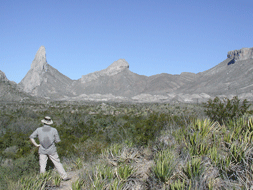For several decades, geologists have known that salt structures are favorable places to explore because of the focusing effect they exert on petroleum migration. They also recognized that strata adjacent to salt structures have unusual thermal histories because of the high thermal conductivity of salt. Although many measurements of temperature have been taken in wells drilled adjacent to salt, measured bottom hole temperatures must be corrected as much as 10-20% because of disruptions to the temperatures caused by the introduction of drilling mud. In addition, most salt structures are not drilled along all margins of the salt structure, so limited direct measurements are available to assess the thermal impacts of the salt in 3D space.
In addition to temperature issues, there is wide disagreement on the role mobile salt has on the risk associated with undrilled targets adjacent to salt and salt welds. Questions persist as to whether welds serve as conduits for migration, or if they serve as barriers to migration.
Temperature has a direct impact on two important components of plays associated with salt. First, there are direct measurements and good numerical studies that suggest that temperatures near the top of salt structures are elevated compared to surrounding basin strata. The numerical models predict suppressed temperatures at depth because of the "wicking" of heat associated with heat flow upwards within the diapirs. These differences in thermal histories have important implications for whether an organic rich source rock that is in contact with the salt is thermally immature or mature. The second issue pertaining to thermal histories has to do with loss of reservoir quality because of cementation. Quartz cementation is very thermally controlled, initiating around 80°C, and increases exponentially as temperatures rise linearly.
Despite these important issues, until now, no ground truth studies have been conducted on strata around exhumed salt structures. Our group is employing vitrinite reflectance, point-counting, SEM, and microprobe with backscatter in order to test hypotheses pertaining to the impacts of the salts high thermal conductivity on surrounding sediments. We are also documenting fluid migration adjacent to diapirs using geochemical methods (TOC, Rock-Eval, biomarker analyses).
The research that we are undertaking at UNLV can address these questions, which are not generally undertaken by industry.
|
